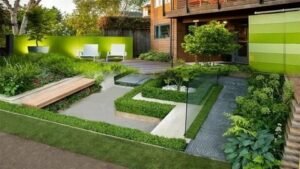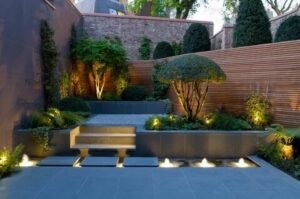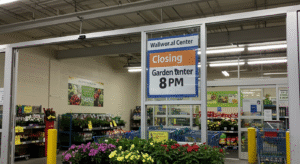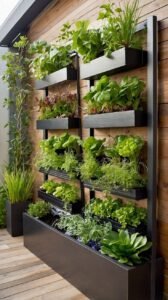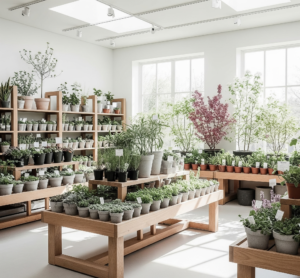How To Design A Garden Without Grass

garden design
Gardens are capable of being beautiful even without a lawn. A no-grass garden can be an innovative design option as well as a pragmatic one. An increasing number of homeowners and gardening lovers choose to eliminate grass because of the high maintenance, water requirements, and weather sensitivity.
A garden without grass has the potential to be an active space that is full of color, unique textures, functional items, and features that require little maintenance. This guide will take you step-by-step through covering the lawn with concrete, plants, and other decorative items. Ultimately, you will have the tools to create an aesthetically pleasing yet highly functional outdoor area.
Fine Tuning the Space’s Attributes Alongside Panning the Garden
After assessing the space, a garden gap is easy to visualize as an oasis; soil composition, sunlight, and drainage depth will determine which plants thrive. Some gardens have extraordinarily compacted soil, such as clay-based soil, which is not optimal for plants, while others are sandy and dry too quickly. Sunlight also plays a crucial part; some gardens receive sunlight for most of the day, while others, such as trees and buildings, tend to block sunlight.
This understanding allows one to eradicate water issues such as pooling, eroding, or water loss, all of which directly impact the health of a plant and its hardscape. For small gardens such as courtyards, maximizing space becomes a necessity. Lastly, planting beds along trellises widens the courtyard, while pathways provide a graceful flow to the garden.
Selecting the Appropriate Ground Cover
Without grass, a garden’s base becomes a blank canvas, awaiting the application of creativity. Ground cover options vary, each having its artistic style and texture. Gravel works wonders for contemporary and minimalist gardens in setting modern and clean lines. Organic mulch like bark or decorative mulch like crushed stone aids in moisture retention while effectively managing weeds. Low-growing plants such as thyme, sedum, and dichondra create a dense green carpet with minimal maintenance requirements for a soft and natural look.
Different textures and colors of ground covers change the entire vibe of the garden. Moss is an excellent choice if you are looking for serenity, accommodating shaded areas with a dreamy feel, as it has an almost otherworldly texture. Succulents and drought-resistant plants blend effortlessly with pebbles and decomposed granite, adding a Mediterranean touch. The foot traffic the area receives must be considered when choosing materials. Durable options such as flagstones set in gravel or softer textures like decorative sections and concrete pavers suit high-traffic areas. Thoughtfully selected ground covers serve not only as perfect replacements for grass but also add further dimension to the visual and tactile aspects of the garden.
Hardscaping for Focusing on Form and Structure.
In a garden design without any green turf, the stonework is the primary focus of balanced movement. Borders and stone paths facilitate movement and serve as an outline for parts overgrown with vegetation. Large stepping stones set into gravel frame a modern aesthetic complement, while irregular flagstones complement a natural setting. Apart from pathways, zoning within the garden can also be done with the help of hardscaping. An exquisitely crafted patio makes it possible to increase the usable square area of a house by relocating the living room outside.
It also serves as a prime area for lounging or giving the space a social touch. Raised beds with timber, stone, or metal edges are a perfect way to display greenery in an orderly manner. It makes maintenance simple through captures of unrestrained height. To invite soothing, earthy, soft elements of nature that do not give a rigid structure vibe, it is blended where foliage transforms, and the garden emerges. Combining these materials can enrich the space beyond the ornamental features, increasing the visual appeal and adding identity to the garden
Selecting Plants & Greenery
In a garden without grass, plants require greater attention since they provide the only form of greenery and texture. Succulent plants, ornamental grasses, and hardy shrub varieties can replace the monotony of a lawn with a multi-dimensional landscape. Drought-tolerant succulents are sculptural, and hardy lavender, salvia, and echinacea perennials provide long-lasting color and fragrance.
Water Features & Decorative Elements
Apart from plants, water features, and other decorative elements like sculptures, sculptures and artistic seating bring character and activity to a garden. Gentle flowing water in the form of fountains, ponds, or even rivers creates an atmosphere of soothing calm. The sound of water from the accompanying water feature can completely transform a setting, providing a sense of escape from the daily chaos.

Custom pieces such as fire pits enhance the garden. String lights or lanterns add warmth to the garden during the evening, and illuminating flowering trees offer an inviting spot for rest. Running lights provide navigation after dark, and uplighting enhances the beauty of the plants during the night. Each stone and sculpture has been collected and thoughtfully placed to create a space that perfectly balances nature and artificial beauty.
Green & Sustainable Approaches
Creating a grassless garden contributes to conservation and integrates more sustainable gardening practices. Xeriscaping can create an exuberant garden that does not need a lot of watering through the use of water-conserving plant selections. Low-water-yielding plants such as agaves, yuccas, and domestic wildflowers do very well with little to no water and, therefore, lessen the impacts of the environment and maintenance work. There are possibilities for systems that collect rainwater to be incorporated into the design to capture waste and use it to water the garden later.
Composting is one of the natural ways to enrich the soil; therefore, obtaining nutrients as fertilizers during the growth cycle will not damage the plants as they can provide adequate nutrition through natural means. In addition to improving visual appeal, mulching also helps to retain moisture and reduce the growth of weeds. By integrating resource-conserving, self-sufficient gardening methods alongside sustainable plant choices, a grassless garden can thrive without depleting vast resources.
Conclusion
The absence of grass in a garden does not constrain one’s creativity; instead, it allows one to venture into exploring fresh garden-scape designs that are much more complex. With proper planning and selection of unique ground covers, hardscape features, and ornaments, an outdoor area can be transformed into an exquisite oasis much easier to maintain than a traditional garden. From stone pathways, tranquil water features, and diverse plant life, a garden without grass wielding varied textures serves a dual purpose of elevating charm and practicality. Opting out of grass provides the region and the gardener with a unique style determined by the owner while increasing carefreeness and promoting sustainability. Commencing today, envision captivating outdoor spaces that flourish without grass.
